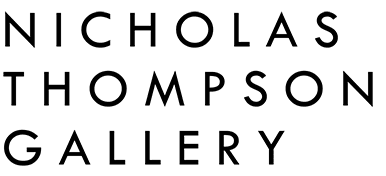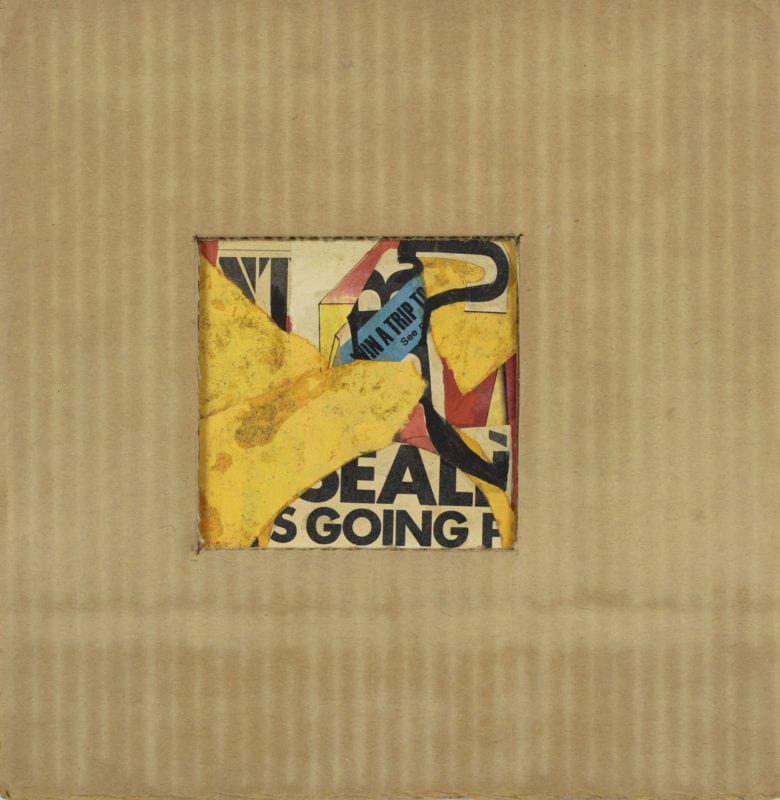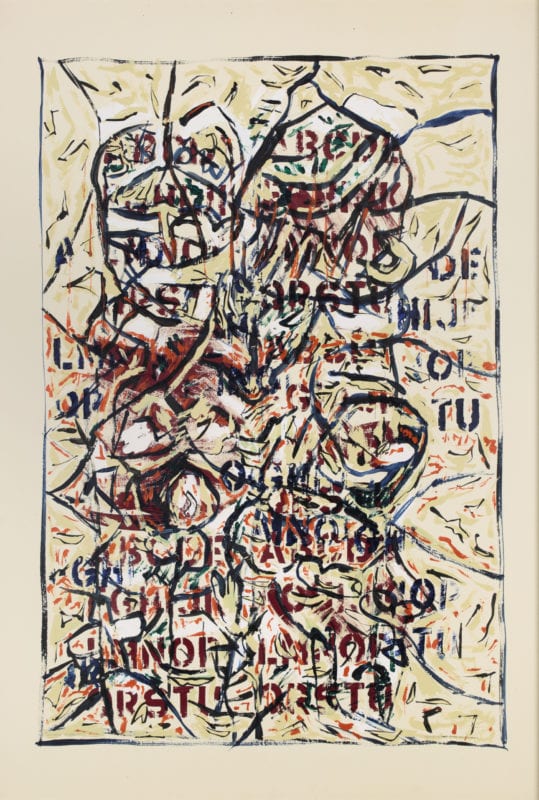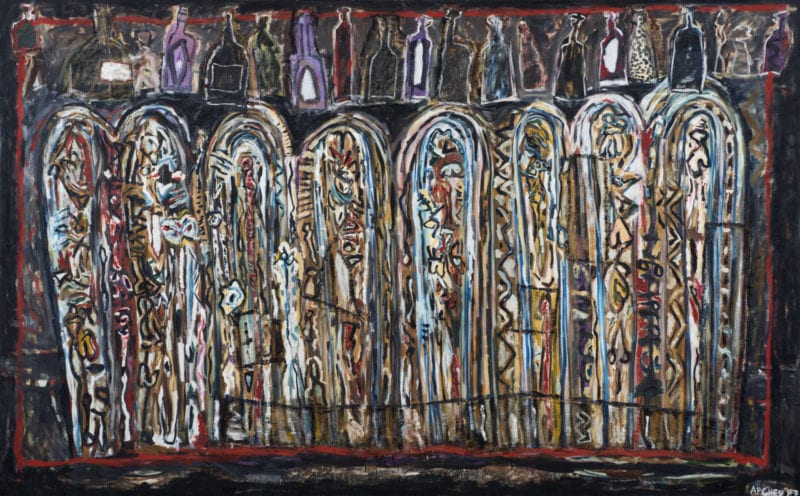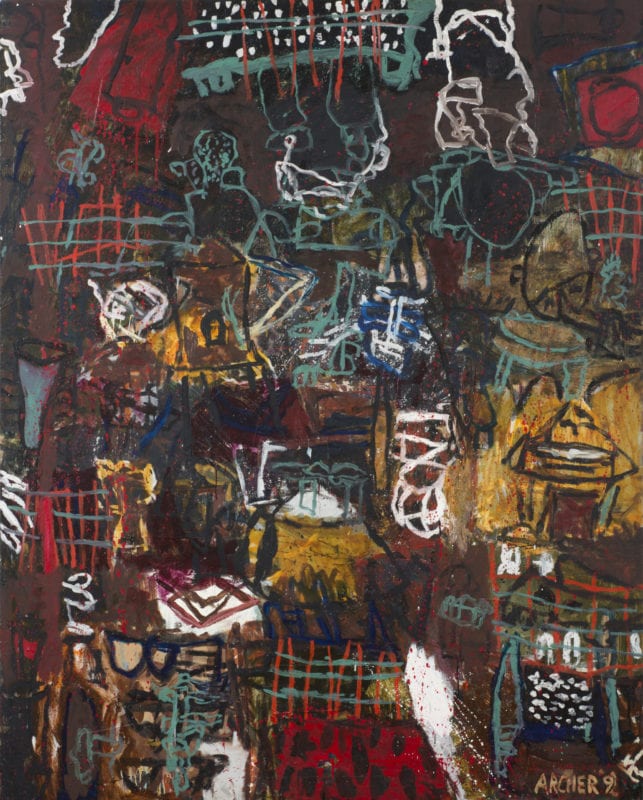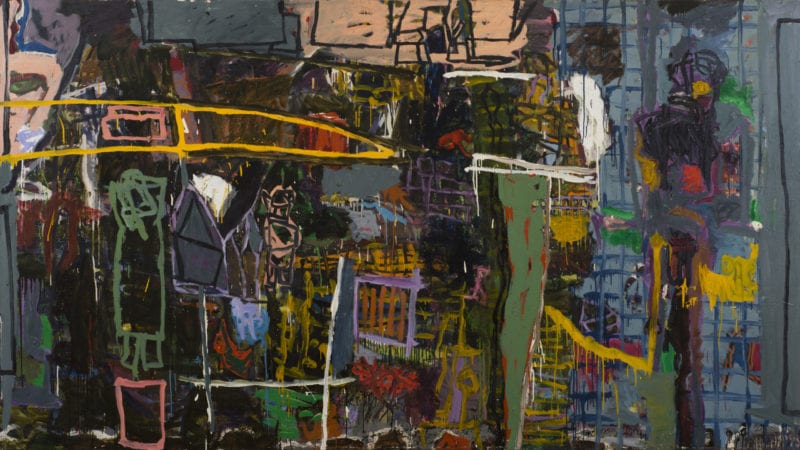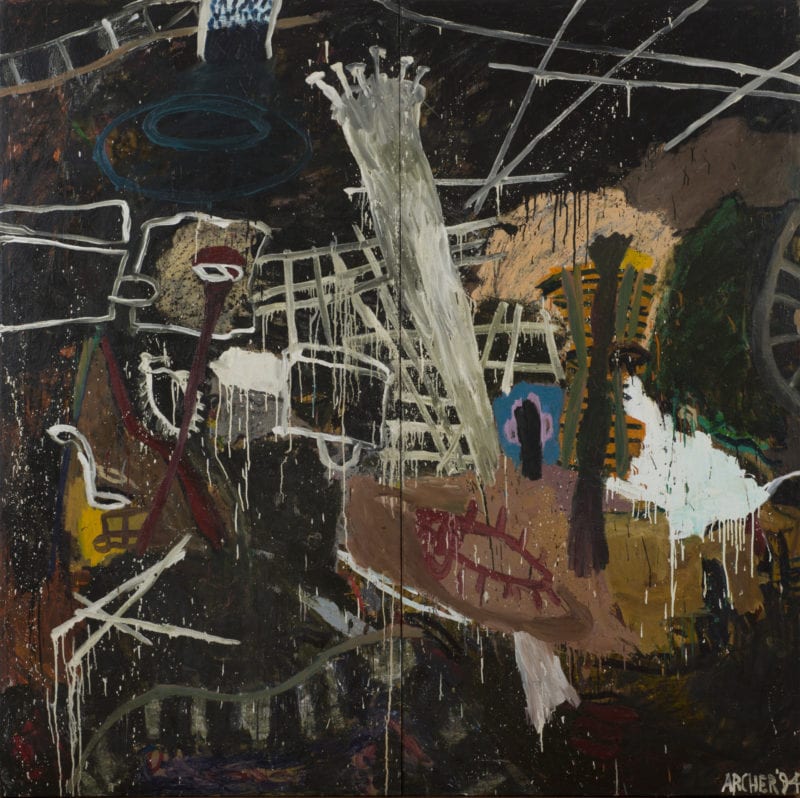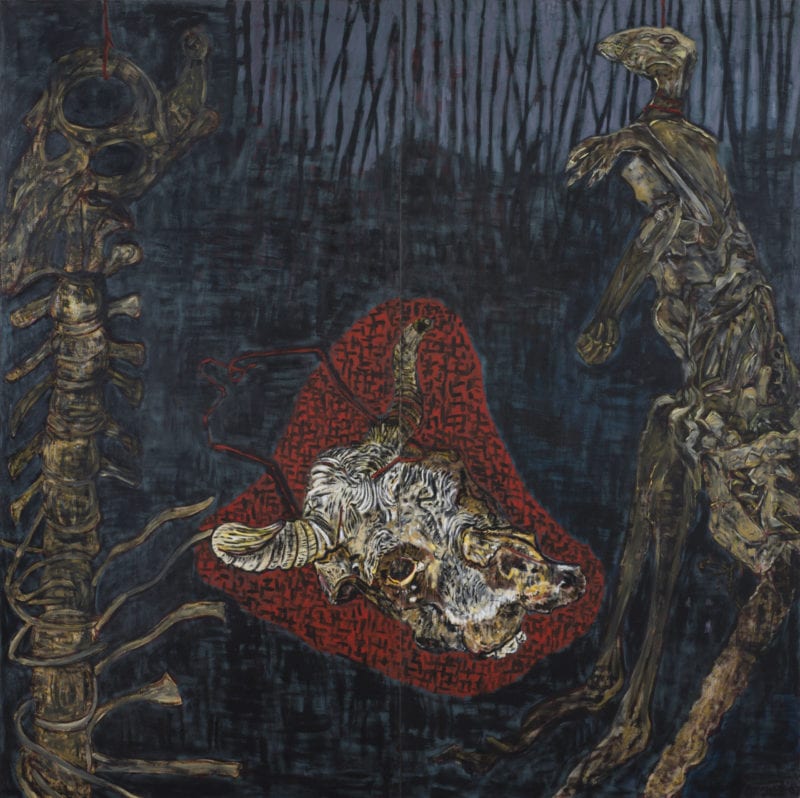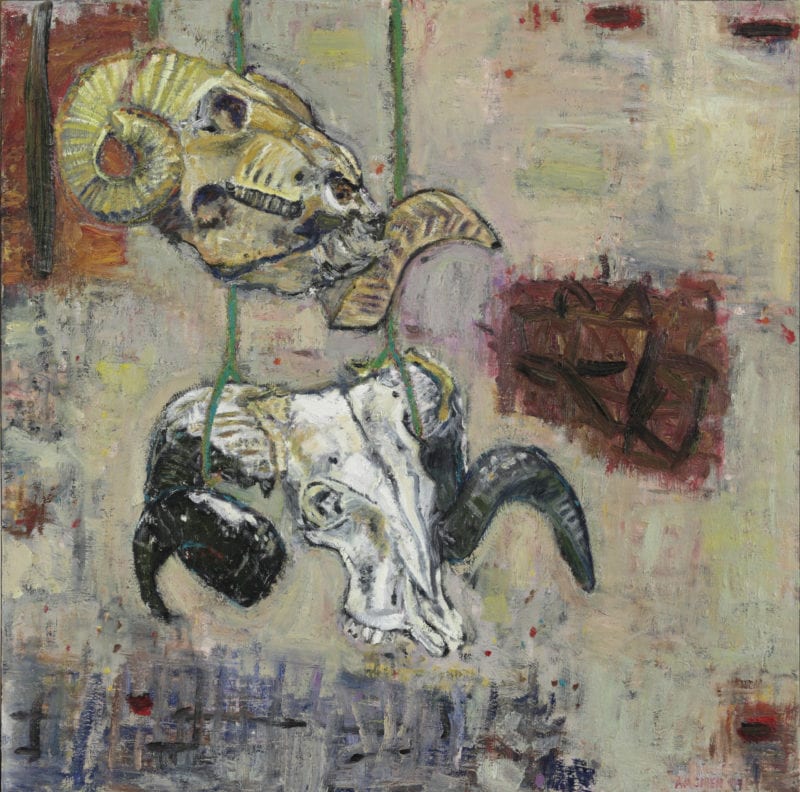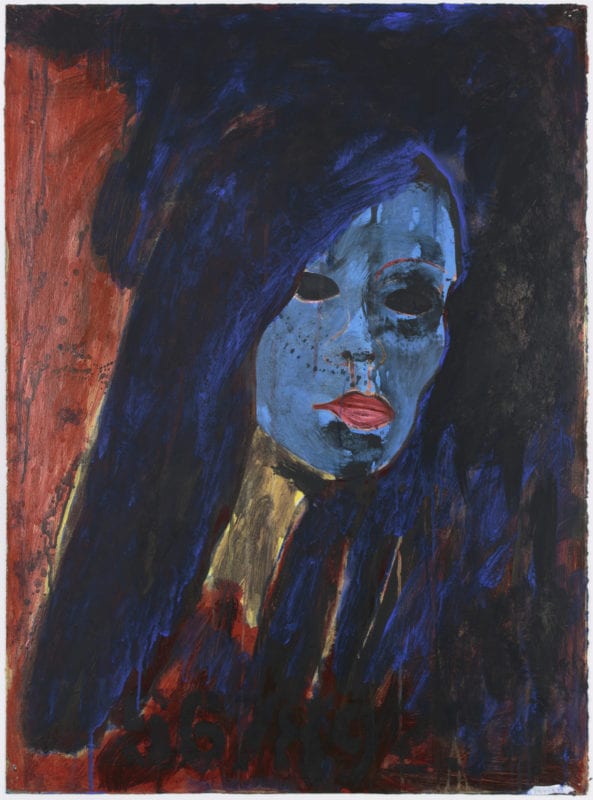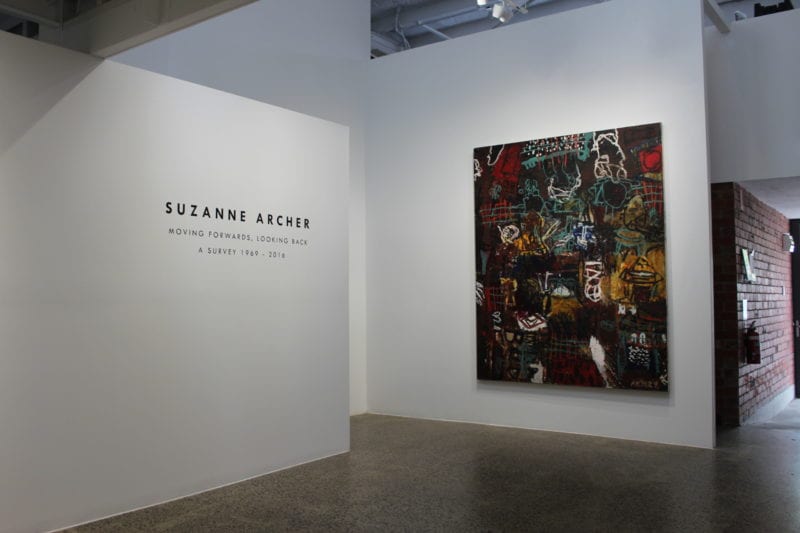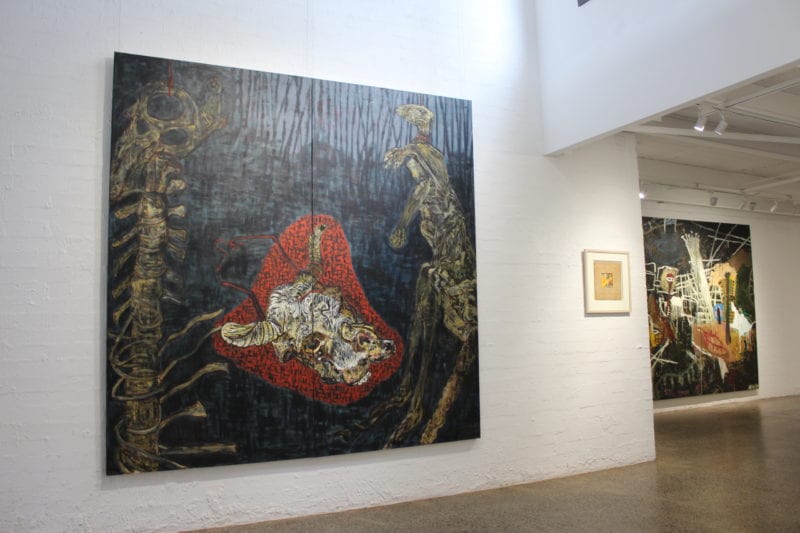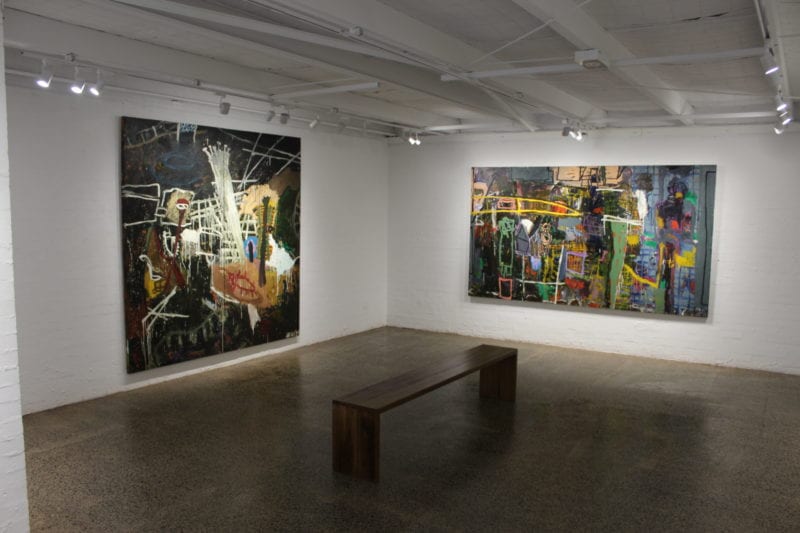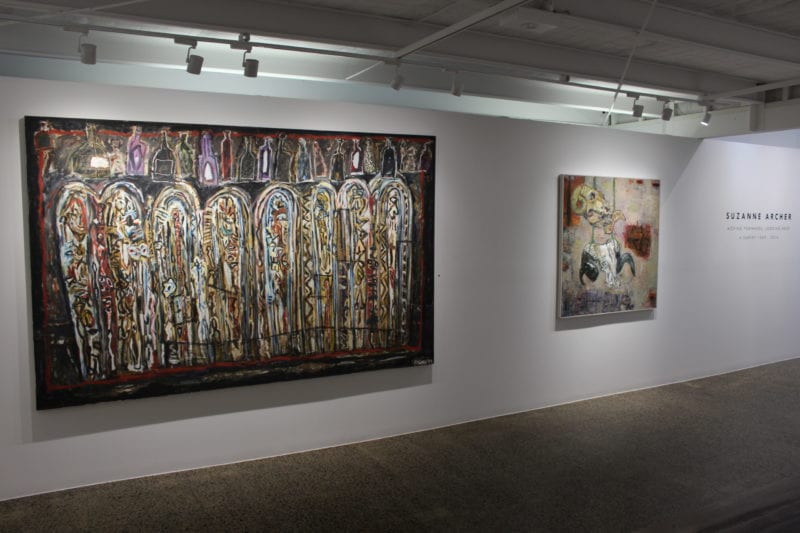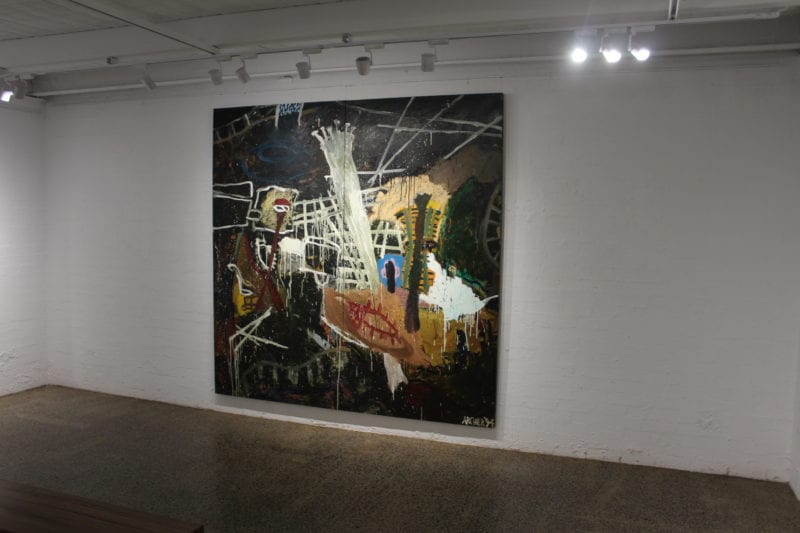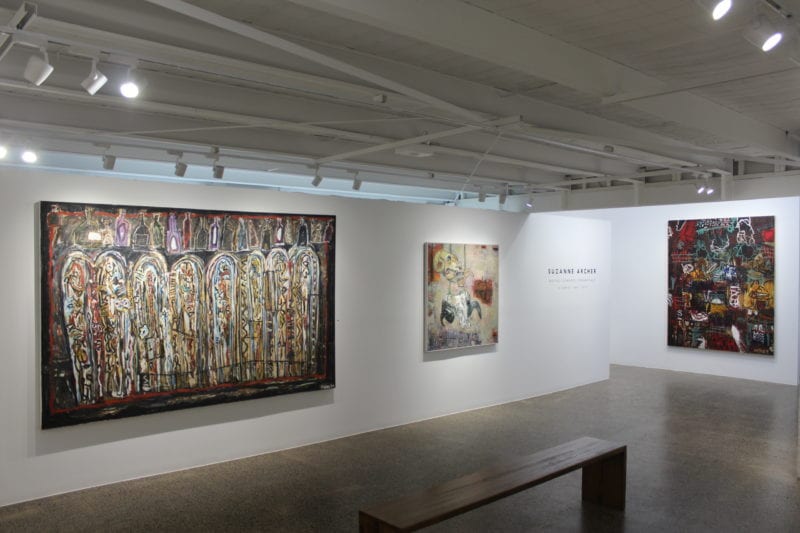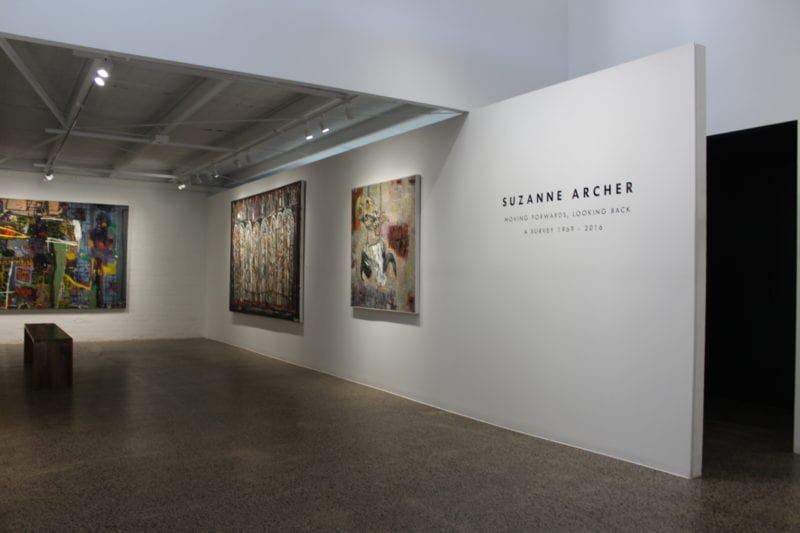SUZANNE ARCHER: MOVING FORWARDS, LOOKING BACK – A SURVEY (2016)
17 TO 23 DECEMBER 2016 / 14 TO 29 JANUARY 2017

Continuing this momentous year, Moving Forwards, Looking Back – A survey 1969 – 2016 at Nicholas Thompson Gallery addresses this significant point of Archer’s established career, which seems to only be gaining energy. Whilst considerably smaller in size, this exhibition covers greater ground, selecting significant works from Archer’s forty-seven years of practice.
Born in the UK, Archer trained at the Sutton School of Art before moving to Australia in 1965. The significance of these early beginnings was not lost to the artist, who created a “childhood memory journal (Childhood Remembered)” as she noted ““I live 12,000 miles away and have no photos of my childhood – make a photo album – sketchbook of memories. Perhaps use text too.” From this Archer painted Radiating Memories, 1987, reflecting upon her childhood, stating “When I was young I lived for a short period in a caravan with my parents and younger brother in Kingswood, UK where I attended the very small local school. Prior to morning break we children would line up our milk bottles on the radiator and at break add powdered chocolate to them.”
It is these personal notations that results in an intimate look at the experiences that made Archer the artist she is today. Archer provides memories alongside each work in the exhibition catalogue, each telling insights behind the works that are markers of success and change in her practice.
Revealing the great influence of travel in Archer’s early practice, the works selected vary from her time as a young art student in the early 1980s at Greene Street Studios in New York, the following residence in the Power Studio at the Cite Internationale des Arts Paris, and to her first travels in Zimbabwe. Greatly different, each work reveals Archer constantly pushing the boundaries to where her practice would go.
From 1969 – 2016 the works selected in the exhibition morph and change from her early explorations in abstraction and text, to develop later into more figurative and metaphorical subjects. For any young artist, the exhibition is a great example of an established artist who maintained a passion to find new subjects and points of inspiration throughout her career.
Thoughtfully put together, Moving Forwards, Looking Back promises to be a distilled and compelling exhibition of Archer’s impressive career.
ARTIST PROFILE ONLINE
PREVIEW 15 December 2016
While the thought of our impending demise makes most of us uncomfortable, Suzanne Archer looks at death with curiosity and a dark twist of humour.
Archer’s exploration of mortality is the current focus of an art career that spans nearly five decades. With a visceral theatrical style reminiscent of Francis Bacon and a moody palette Francisco Goya would envy, Archer’s work has covered subjects as diverse as landscape, memory and horse anatomy.
Although Archer has worked across a variety of mediums, the intimate survey of work included in Moving Forwards, Looking Back focuses on the evolution of her painting and collage.
“The chosen works exhibit a gestural use of paint, multi-layered and with a defined use of line,” says Archer. “When I was a young art student in the 1960s, I was introduced to the collages of Kurt Schwitters and over the years my use of collage remains quite central to my practice, particularly in my works on paper and in the artist’s books I make.”
Landscape is a repetitive element in the exhibition and Archer’s travels to Paris, Amsterdam and Zimbabwe are reflected in the illustrative depth of abstract works like Mupanda, 1992. Archer’s landscapes are not the soft impressions of Claude Monet. They are more like the layered surfaces of James Esnor in which smears of generous brushwork are clearly visible. Closer to home, Archer has been inspired by the bushland surrounding her property in Wedderburn, where she has lived since 1987. In the imposing three-metre-wide painting, Coalesce, 1993, a prickly array of plant life is depicted in tactile layers of paint, abstract lines and contrasting colour. The result is an image that teeters on the edge of chaos and harmony: elements that encapsulate the organised wildness of native bushland.
Archer’s fascination with motifs of death (decay, mortality, the macabre) began in 2002 when she spent time in the Veterinary Science laboratories at the University of Sydney observing horse dissection classes and creating anatomical sketches of animal remains. Archer visited so often that she was given a horse skull, vertebrae and hoofs to use for reference in her studio. “Following on from this experience, I proceeded to include the skeletal remains of other animals in my oil paintings,” she says. “My studio began to look like a museum as I began to collect various animal skulls, skeletons and bones and place them in cabinets and on the wall.”
A dehydrated kangaroo and the gnarly skull of a bull feature in Guardians, 2007, while the curled horns of a ram spiral through the centre of Trophies, 2007. Decay is central in these paintings, but when Archer’s practice is viewed as a whole it is clear that her work covers the whole gamut of life with a vibrant curiosity that continues to propel her into new creative territory.
“My work over different periods of my life has taken in various subject matter and for a time I have become immersed in that,” she explains. “The subject matter is not intended to confine the interpretation of the work but rather to prompt an extensive experience of that subject to inform me and lead me forwards.” In this survey show Archer is indeed Moving Forwards, Looking Back.
ART GUIDE AUSTRALIA ONLINE
SUZANNE ARCHER: THE DEFINITE AND EPHEMERAL
“It is a process of elimination and addition, constructed of the definite and ephemeral” wrote a twenty-four year old Suzanne Archer in Mervyn Horton’s seminal 1969 survey Present Day Art in Australia. (1) ‘Definite and ephemeral’ is arguably one of the most suitable descriptions of Archer’s near fifty year practice. From her collage works of the 1960s and 1970s to her imposing landscapes of the 1980s and 1990s to the meditations on mortality of the 2000s and 2010s – a handwriting of abstracted line has formed the ephemeral connective tissue that supports the definite assembled forms of letters, numbers, flora, fauna and figure.
This exhibition ‘Moving Forwards, Looking Back’ is a small survey of the last forty-five years of Archer’s career, specifically her two dimensional work, predominately her painting. In a 2002 Art and Australia article on the painters of the Wedderburn, Sydney region, Peter Pinson observed that ‘Paul Klee spoke of taking a line for a walk, Archer takes a line on a reckless, intoxicated spree’. (2) Archer’s ephemeral, abstracted line similarly links the works in this exhibition. Its genesis can be seen in the small black painted curve in the top right of the smallest and earliest work Win a trip (1969) and threads and expands through the subsequent works of 1970s and 1980s, reaching its abstracted zenith in the landscape works of the 1990s before receding as Archer’s concerns of the 2000s and 2010s became increasingly figurative. The abstracted line nevertheless endures in these later meditations, revealing an ephemeral support and process driven scaffolding containing the definite representations of mortality and identity. The idea of the perpetual motion of the line is similarly important, the most recent work Bluesu (2016) is less than a year old. Archer’s practice remains continual, constant and compelling.
In an assessment of modernist abstract painting, Rosalind Krauss argued that the most successful works operate ‘through a structure of oppositions: line as opposed to colour, contour as opposed to field, matter as opposed to the incorporeal’. (3) What emerges is the ‘provisional unity of the identity of opposites. Line becomes colour, contour becomes field, matter becomes light’. Pollock described this result as ‘memories arrested in space’, especially prevalent in the binary opposition of figure/non figure, as image is absorbed into structure. (4) I would argue that comparable relationships reveal themselves in the tensions and harmonies of the ‘definite and ephemeral’ oppositions of Archer’s practice, where letters, marks and skeletons sit in dense, painterly and ambiguous territories.
As part of the 1982 Festival of Sydney, celebrated Australian author Patrick White selected twenty works from the Art Gallery of New South Wales for an exhibition titled Patrick White’s Choice. Included in the selection was Suzanne Archer’s Kites (1978). White commented that Archer’s works are ‘not inaccessible to those prepared to merge with them’. (5) I hope this small survey of Suzanne Archer’s work will provide much for the viewer to merge with, much as her definite figures merge into their ephemeral webs.
Nicholas Thompson
1 Horton, M ed. Present Day Art in Australia, Ure Smith, North Sydney, 1969, p.14
2 Pinson, P. ‘Common ground: Four Wedderburn Painters’ in Art and Australia Vol 40 No 2 Summer 2002, p.275
3 Krauss, R. ‘Reading Jackson Pollock, Abstractly’ in The Originality of the Avant Garde and other Modernist Myths, MIT Press, Massachusetts, 1985, p.239
4 ibid
5 Verity Hewitt, H. ‘Patrick White’s choice’ in Art and Australia Vol 36 No 2 Summer 1998, p.2469
